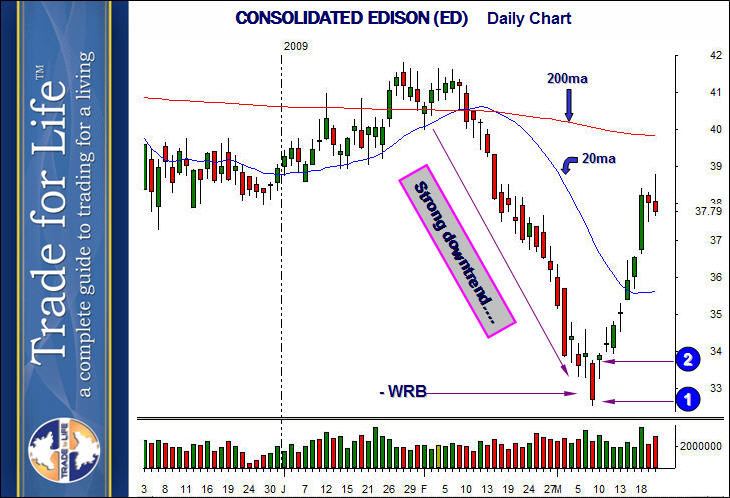
VCM Weekly Trading Lessons
The Monster Gap
Last week we discussed ‘reversal patterns’, and gave an example of a ‘failed breakdown’, and how that led to a reversal. We also mentioned some of the many ways stocks can reverse. Here is the comment from last week. “Playing reversal patterns can mean many different things to different traders. The very term ‘reversal’ tells us two things. First, it implies a change of direction, so we should look at this topic with squinted eyes. We know the odds are always with following the trend, and playing in the same direction of the color of the daily bar. Second, we know that most new traders want in, even though they should not. New traders like reversals, because there is a certain sense of ‘heroics’, finding the top or bottom. But the truth is, it is usually a loser’s trade.
However, knowing reversals is still important, even if it is to know when NOT to take a trade, or when to lock profits in on a good trade. Sometimes, we may want to play a ‘reversal’ as an entry. They can happen in almost an infinite number of ways. Most of these are not recognizable, therefore, not playable. The truth is that most of the time, when a stock DOES change direction, it does so for no apparent reason. However, sometimes, that change happens in a way, and in an area, that we can notice the change as ‘soon as it happens’. Sometimes, the reversal is ‘climactic’. Both of these have been topics of prior lessons. There are also other ways, such as ‘shock value’ that can happen on a gap, or by a failure. Today, we want to look at an example of a ‘failed breakdown’.”
We had some questions about how gaps can be a reversal pattern, so we are going to show an example of a reversal gap, known at VCM as a ‘monster gap’. Generally speaking, gaps that change the direction of the daily chart are either ‘professional’, or ‘novice’. They both reverse the direction for different reasons. Professional gaps gap ‘against’ the current trend and ‘shock’ the stock into a new direction. Here is an example of a professional gap, known as the ‘monster gap’.

Many people miss a little detail. This was not a ‘small gap’. Remember, the last bar down is red, so the stock closed at ‘1’, and opened the next day at ‘2’, on the other side of the bearish wide range bar. The stock was in a strong downtrend, and from the moment of the gap, it went up for seven straight days. It eventually topped out at 40.00. What happens? Well, at some point the bulls may get interested in this stock as it comes down in price, but the sudden gap forms a catalyst. Think about all the traders that were short the stock, and shorted the last day down. They are ALL under water at open, the next day. Not some of them; ALL of them. Some are upside down a LOT. This forces them to start buying to close out their position. As the stock starts rising, everyone short from the prior weeks starts to see their profits shrink, (or losses increase) and realize this stock has dropped a lot and it is time to exit. That adds to the buying pressure. Then the ‘would be bulls’ see a new uptrend begin, and decide to get on before it is too late.
Other professional gaps can reverse the direction of a stock also, but this is one of the most powerful. Some stocks may gap only half or most of the way though a red bar, and have the same affect. This concept works exactly the same in reverse. That is, a stock in an uptrend, which gaps under a wide green bar, may begin a reversal to the downside.